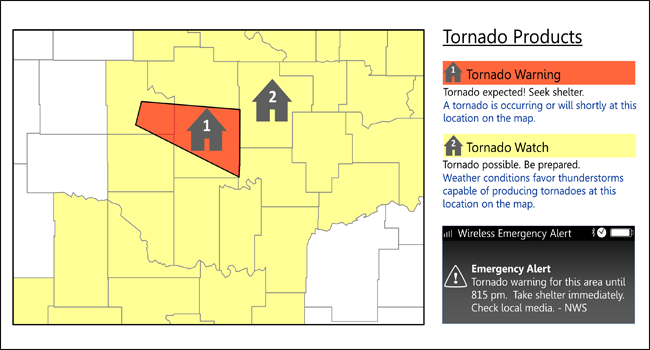Tornado watch vs warning: What to know when severe weather strikes
People in the South are no strangers to severe weather, and 2023 has seen more than its fair share already. But a question that does come up with each storm is, what is the difference between a tornado watch and a warning?
Across the country, hundreds of tornadoes have been identified and dozens of deaths have been reported since the beginning of the year, even more tornadoes like the ones that tore through Arkansas and Illinois on Friday are expected soon. In late March, a devastating outbreak in the South killed more than 20 people in Mississippi and Alabama and followed several previous outbreaks.
Middle Tennessee has also seen its fair share of severe weather this year and more seems to be headed that way Monday with the Nashville and Middle Tennessee area under a tornado watch. The tornado watch remains in place until 6 p.m. and includes Davidson, Williamson, Rutherford, Wilson, Sumner and all counties east of those to the North Carolina State line.
Here's a look at the difference between a watch and a warning, safety tips and more should severe weather strike near you.
A tornado watch has been issued for parts of North Carolina and Tennessee until 7 PM EDT pic.twitter.com/K0qwiAUqQI
— NWS Nashville (@NWSNashville) August 7, 2023
What is a tornado watch?
When a tornado watch is in place tornadoes are possible in and near the watch area, according to the National Weather Service.
The NWS suggests that people who are in the warning area review and discuss their emergency plans, check supplies and have a safe room.

"Be ready to act quickly if a warning is issued or you suspect a tornado is approaching. Acting early helps to save lives," writes NWS.
What is a tornado warning?
When a tornado warning is issued it means a tornado has been sighted or indicated by weather radar. There is imminent danger to life and property.
Here are some suggestions from the National Weather Service if a tornado warning is issued for your area:
Move to an interior room on the lowest floor of a sturdy building
Avoid windows
If in a mobile home, a vehicle, or outdoors, move to the closest substantial shelter and protect yourself from flying debris
Warnings typically are for a much smaller area that may be impacted by a tornado identified by a forecaster on radar, a trained spotter or law enforcement who is watching the storm, according to NWS.
What is a tornado emergency?
A step above a tornado warning, issued by the National Weather Service in “exceedingly rare” situations, when:
A severe threat to human life or catastrophic damage is imminent or ongoing.
Visual or radar evidence such as a reliable source confirms a tornado or a radar picks up the signature of a ball of debris inside the tornado.
More tornadoes than normal
As of April 1, there had been more than 300 tornadoes so far, and according to Storm Prediction Center data, it was the third-most-active start to a year on record in the U.S.
“We should be at about 200 tornadoes for today's date,” Victor Gensini, associate professor at Northern Illinois University, told USA TODAY on March 30. “So we're running about 100 tornadoes above average, and we have been the entire year."
USA Today contributed to this report.
Joyce Orlando is an Audience Specialist with the South Region Audience Team with The Tennessean. She can be reached at jorlando@gannett.com.
This article originally appeared on Nashville Tennessean: Tornado watch vs warning? Know the difference during severe weather

